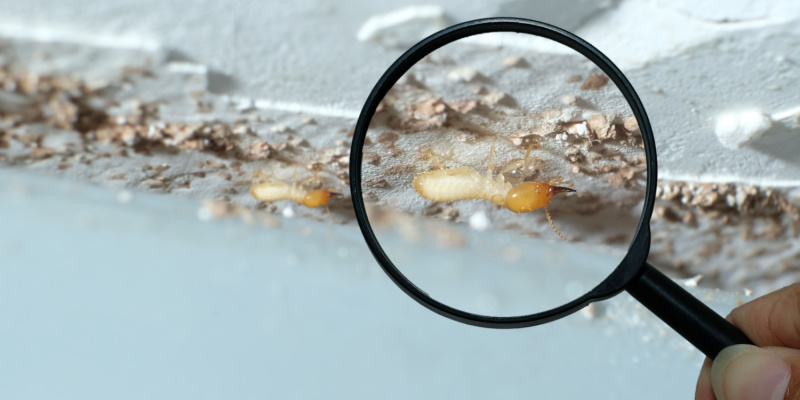If you have a termite infestation in your home, you likely will not see actual termites crawling around your floors. Termites stay out of view, hidden deep in your walls, floor, and ceiling. They do not come out into the light unless they are ready to branch out and create new colonies. In this case, they send out winged termites to find a new place to build a colony. Knowing how to identify a termite infestation and what to do if you discover termite signs will help protect your home from extensive damage.
What to look for
Termites are wood eating insects that create massive nests inside people’s homes. A few signs that you may have a termite infestation are:
- Thin or papery looking baseboards and other trim throughout your home: Because termites eat away at the wood from inside the walls or floor, the exterior layer of the surface will be left intact. But as it becomes hollow, it begins to appear thin and weak.
- Wavy or water damaged looking floors: Similarly to looking thin, flooring, especially wood floors, begin to appear like they have endured water damage. The look appears because of the weakening boards, but it is also true that termites often infest areas of the home that have lots of moisture.
- Small piles of frass: After consuming wood, it should be no surprise that termite excrement resembles saw dust. If you find little piles of sawdust near light fixtures, under wall hangings, or around the windows, look closely. If the saw dust is a little thicker and has geometric sides, it is most likely that you have discovered frass, or termite droppings.
- Faint clicking sound at night: If you have a severe termite infestation or a really quiet house, you can hear a clicking sound. Termites thump their heads against their wooden tunnels to communicate. The head knocking often sounds like a clicking noise to the human ear. While they make this sound in the daytime as well, you can usually only hear it in the stillness of the night.
- Shed wings around the perimeter of your home: When a colony reaches a certain capacity in a space, the termites will send out winged termites to go out in search of a new place to make a new colony. These winged termites are called swarmers. When a swarmer finds your home to be just perfect for a new colony, they will land, usually on an exterior window sill, and immediately shed their wings before finding a way inside.
- Mud tunnels on the foundation of your house: If you inspect the exterior perimeter of your home, you may notice mud tunnels about the width of a pencil stuck to the foundation. These tunnels allow subterranean termites to enter and exit your home without being exposed to the sunlight.
Call in an expert
If you should discover any of the above signs of termites, calling an expert termite control professional is the next step. Termites are serious business and could end up costing you thousands of dollars in repairs. The faster you can get rid of them, the less damage they can do.
For Upland, CA homeowners, give Bug Baron Exterminator a call today.
